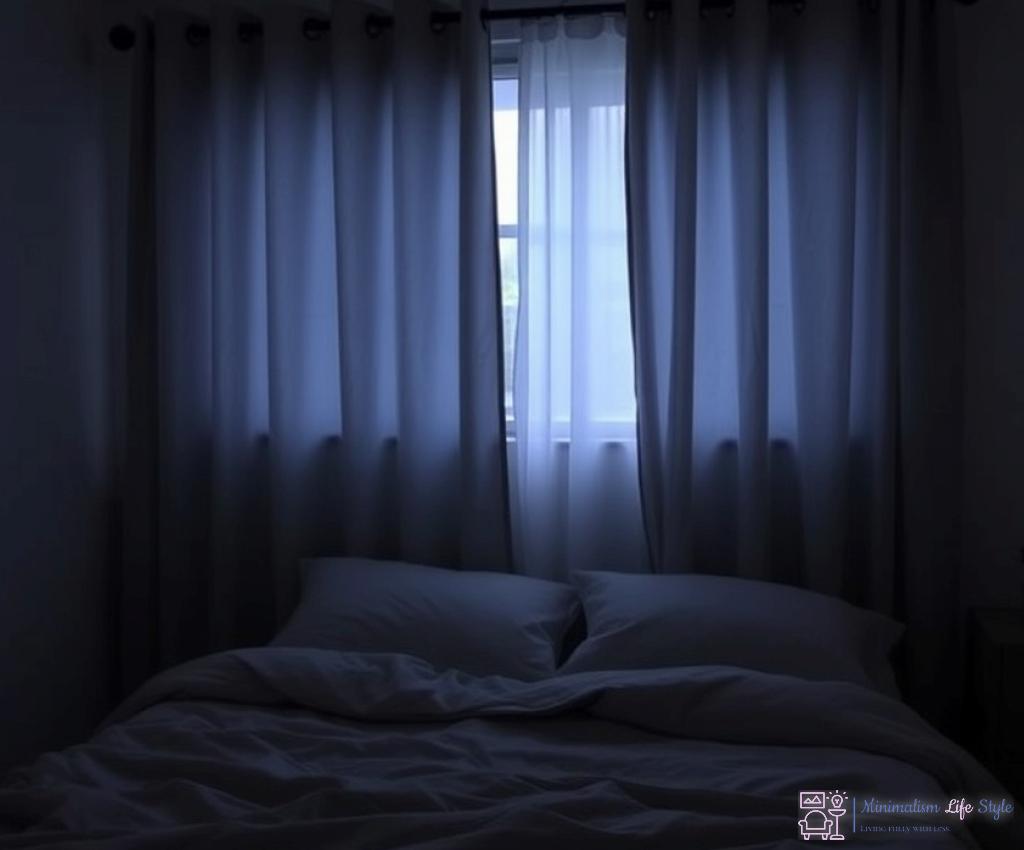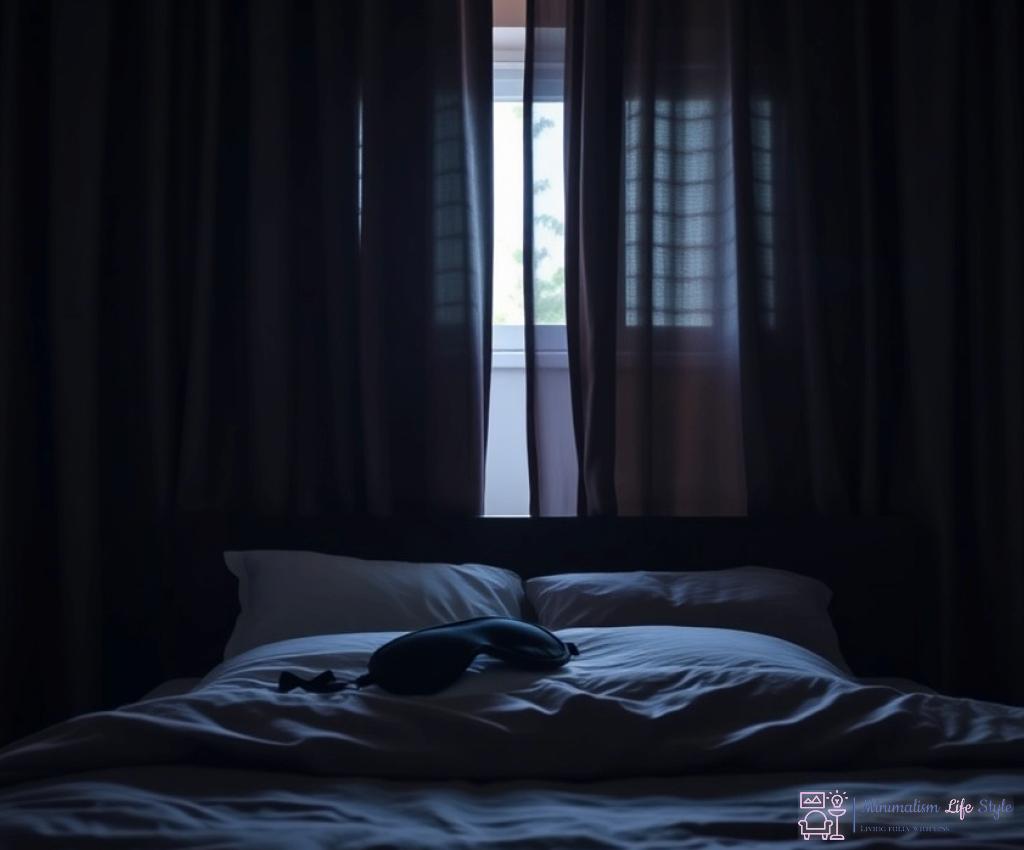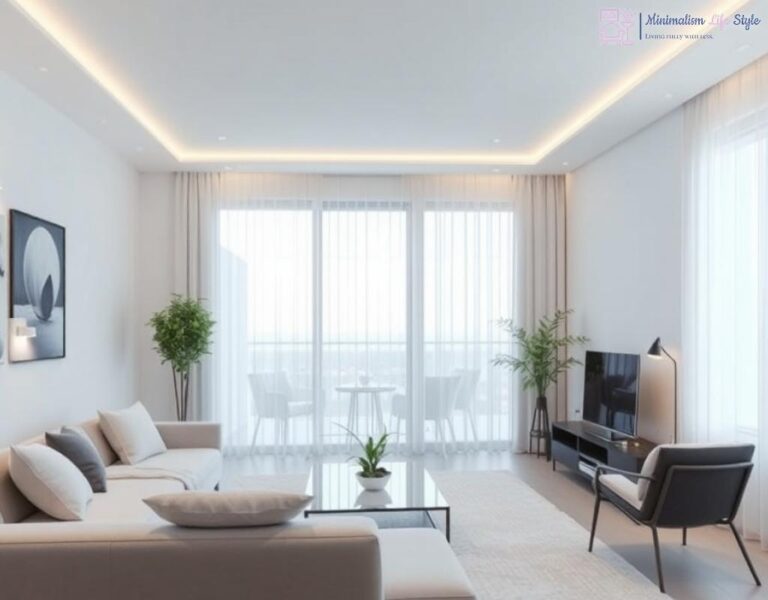Understanding Light Pollution’s Impact on Sleep
Light pollution isn’t just an aesthetic issue; it’s a significant factor affecting our sleep quality. As urban areas expand, artificial light from street lamps, buildings, and vehicles creates a haze that obscures the natural night sky. This persistent glow can disrupt our circadian rhythms, leading to a host of sleep-related problems. Understanding the nuances of light pollution is crucial for reclaiming restful nights and enhancing overall well-being.
The body’s internal clock, or circadian rhythm, is heavily influenced by light exposure. When we are exposed to artificial light, particularly blue light emitted by screens and LED bulbs, our brains receive signals that it’s still daytime. This can result in delayed sleep onset and reduced melatonin production, the hormone responsible for sleep regulation. The consequences? A cycle of insomnia and daytime fatigue that many struggle to escape.
Creating a sleep-friendly environment is paramount in the fight against light pollution. Here are some minimalist strategies to consider:
- Invest in Blackout Curtains: These can significantly reduce external light intrusion, creating a dark sanctuary for sleep.
- Use Sleep Masks: For those who cannot control their sleeping environment, a comfortable sleep mask can provide a personal solution to light pollution.
- Limit Screen Time Before Bed: Reducing blue light exposure at least an hour before sleep can help your body prepare for rest.
- Consider Smart Lighting: Using dimmable lights or smart bulbs that reduce blue light in the evening can help align your home with natural rhythms.
- Embrace Minimalism: Keeping the bedroom clutter-free and devoid of distracting lights can enhance the sleep environment.
Incorporating these strategies can transform your sleeping space into a haven that promotes restorative sleep, free from the disturbances of modern light pollution.
Simple Home Adjustments for a Darker Night

In our relentless pursuit of a peaceful night’s sleep, small adjustments in our home environment can make a monumental difference. The artificial glow from our surroundings can creep into our bedrooms, undermining our efforts to create a restful sanctuary. By implementing some straightforward changes, we can cultivate a darker atmosphere conducive to sleep and rejuvenation. Let’s explore how these simple home adjustments can enhance your nightly rest.
First and foremost, it’s essential to examine the sources of light that infiltrate our sleeping spaces. Sealing gaps in windows and doors can drastically diminish unwanted light. Consider installing weatherstripping or door sweeps, which not only block drafts but also prevent light from sneaking in. Furthermore, painting your bedroom walls with darker hues can absorb light rather than reflect it, thus creating a more intimate and calming environment. A darker palette can make a room feel cozier and enhance the overall sense of tranquility.
Strategic placement of furniture can also play a pivotal role in reducing light pollution. Positioning your bed away from windows minimizes direct exposure to streetlights or moonlight that can disturb your sleep. Additionally, utilizing furniture such as bookshelves or tall plants can act as natural barriers to external light sources. For those who enjoy nighttime reading or relaxation, consider installing adjustable lighting that allows you to control the intensity of light in your room. This flexibility can help maintain a darkened atmosphere while still providing functional illumination when needed.
Finally, one of the most straightforward yet effective adjustments is to eliminate all electronic devices that emit light. This includes televisions, computers, and even charging cables. By creating a dedicated ‘tech-free zone’ in your bedroom, you not only reduce light pollution but also foster a healthier sleep environment. Engaging in relaxing activities like reading a physical book or meditating before bedtime can further enhance your transition into sleep.
The Role of Sleep Masks and Blackout Curtains

In our quest for better sleep, the significance of creating a dark environment cannot be overstated. As mentioned earlier, light pollution can severely disrupt our circadian rhythms, making it essential to take actionable steps to counteract its effects. Among the most effective tools at our disposal are sleep masks and blackout curtains. These two minimalist strategies can transform your sleep experience, providing the dark sanctuary your body craves for restorative rest.
Blackout curtains serve as a formidable barrier against external light sources, effectively blocking out streetlights, headlights, and the moon’s natural glow. Investing in high-quality blackout curtains can create an immediate difference in your sleep quality. Not only do these curtains significantly reduce light penetration, but they also offer insulation benefits, helping to maintain a comfortable temperature in your sleeping space. This dual function makes them an essential addition to any bedroom. Furthermore, choosing curtains with a variety of designs and colors allows you to enhance your room’s aesthetic while prioritizing your sleep environment.
While blackout curtains help to shield your entire room from light, sleep masks provide a targeted solution for those who may not have complete control over their sleeping environment. A well-fitted sleep mask can eliminate any stray light that may seep in while you sleep. These masks come in various materials, from plush cotton to cooling gel-infused fabrics, ensuring that there’s an option suited to everyone’s preferences. What’s more, the use of sleep masks can be especially beneficial during travel, allowing you to block out unwanted light from airplane windows or hotel rooms.
Both sleep masks and blackout curtains contribute to a significant reduction in light pollution within your immediate environment. When utilized together, they create a fortress of darkness that helps facilitate deep and uninterrupted sleep. As you transition into a sleep-friendly lifestyle, remember that the combination of these tools not only enhances your nightly rest but also supports your overall health and well-being.
Creating a Digital Detox Zone Before Bed
In our technology-driven world, it’s all too easy to let screens dominate our evenings. However, the impact of this habit on our sleep quality is profound. As we delve into the realm of light pollution, the glow from our devices emerges as a significant factor disrupting our ability to unwind and prepare for a restful night. By establishing a digital detox zone in our homes, we can reclaim our evenings and foster a more serene atmosphere conducive to sleep.
Understanding the importance of disconnecting from digital distractions is crucial for enhancing sleep quality. The blue light emitted by smartphones, tablets, and computers sends signals to our brains that it’s still daytime, inhibiting the production of melatonin, the hormone that regulates sleep. To combat this, consider a dedicated space in your home where electronic devices are prohibited. This could be your bedroom or a cozy nook designed for relaxation. By removing screens from this area, you create a sanctuary that invites calmness and prepares your mind for rest.
Once you’ve carved out your digital detox zone, it’s essential to fill this space with activities that promote relaxation and mental clarity. Engage in practices such as reading a physical book, meditating, or enjoying a warm cup of herbal tea. These activities not only serve as alternatives to screen time but also help signal to your body that it’s time to wind down. As you immerse yourself in these calming rituals, you’ll notice a gradual shift in your ability to transition into sleep. The soothing ambiance of your digital detox zone will enhance your night’s rest, paving the way for restorative sleep.
The benefits of creating a tech-free zone extend far beyond improved sleep quality. By minimizing screen time before bed, you’re also reducing exposure to the myriad of distractions that accompany digital devices. This focused environment can significantly lessen anxiety and promote a sense of peace, allowing your mind to let go of the day’s stressors. Moreover, as you cultivate a routine centered around relaxation, you may find that your overall well-being improves, leading to increased productivity and a more balanced lifestyle during the day.
In conclusion, embracing a digital detox zone is a powerful and minimalist strategy to combat light pollution and enhance sleep quality. As you disconnect from screens and immerse yourself in tranquil activities, you’ll not only improve your sleep but also nurture your mental health, creating a harmonious balance in your life.
Nature’s Solutions: Embracing the Night Sky
As we navigate the complexities of modern living, it is crucial to remember that nature offers us invaluable solutions for reducing light pollution and enhancing our sleep quality. By consciously embracing the night sky, we can reconnect with the natural rhythms that once guided our ancestors. The cosmos has much to teach us about the importance of darkness and its profound impact on our well-being.
One of the most compelling aspects of embracing the night sky is the opportunity to reclaim our nighttime environment. In a world filled with artificial lights, stepping outside to gaze at the stars can be a transformative experience. The darkness allows our bodies to produce melatonin, the essential hormone for sleep regulation. By fostering a deeper appreciation for the night, we can cultivate a sense of tranquility that encourages restful sleep.
Engaging with the natural world at night is not merely a nostalgic longing; it is a critical part of our biological heritage. Observing celestial events, such as meteor showers or phases of the moon, reminds us of the vastness of the universe and our place within it. This connection can have a calming effect, reducing the anxiety often exacerbated by urban living. Moreover, spending time outdoors during the evening opens up avenues for mindfulness practices, such as stargazing or night walks, which can further soothe our minds and prepare us for sleep.
To fully embrace the night sky, consider designing your living space to encourage nighttime enjoyment. This can include creating outdoor spaces that promote stargazing, such as a cozy patio or balcony. Incorporating elements like comfortable seating, soft lighting, and natural materials can enhance your outdoor experience. By prioritizing these spaces, you not only invite the beauty of the night sky into your life but also establish a routine that encourages you to unwind and disconnect from the demands of everyday life.
In conclusion, the strategies for reducing light pollution extend beyond our immediate environments; they invite us to appreciate the natural world around us. By embracing the night sky, we can cultivate a deeper connection with nature, reclaim our sleep quality, and foster a more peaceful and restorative atmosphere in our lives.




